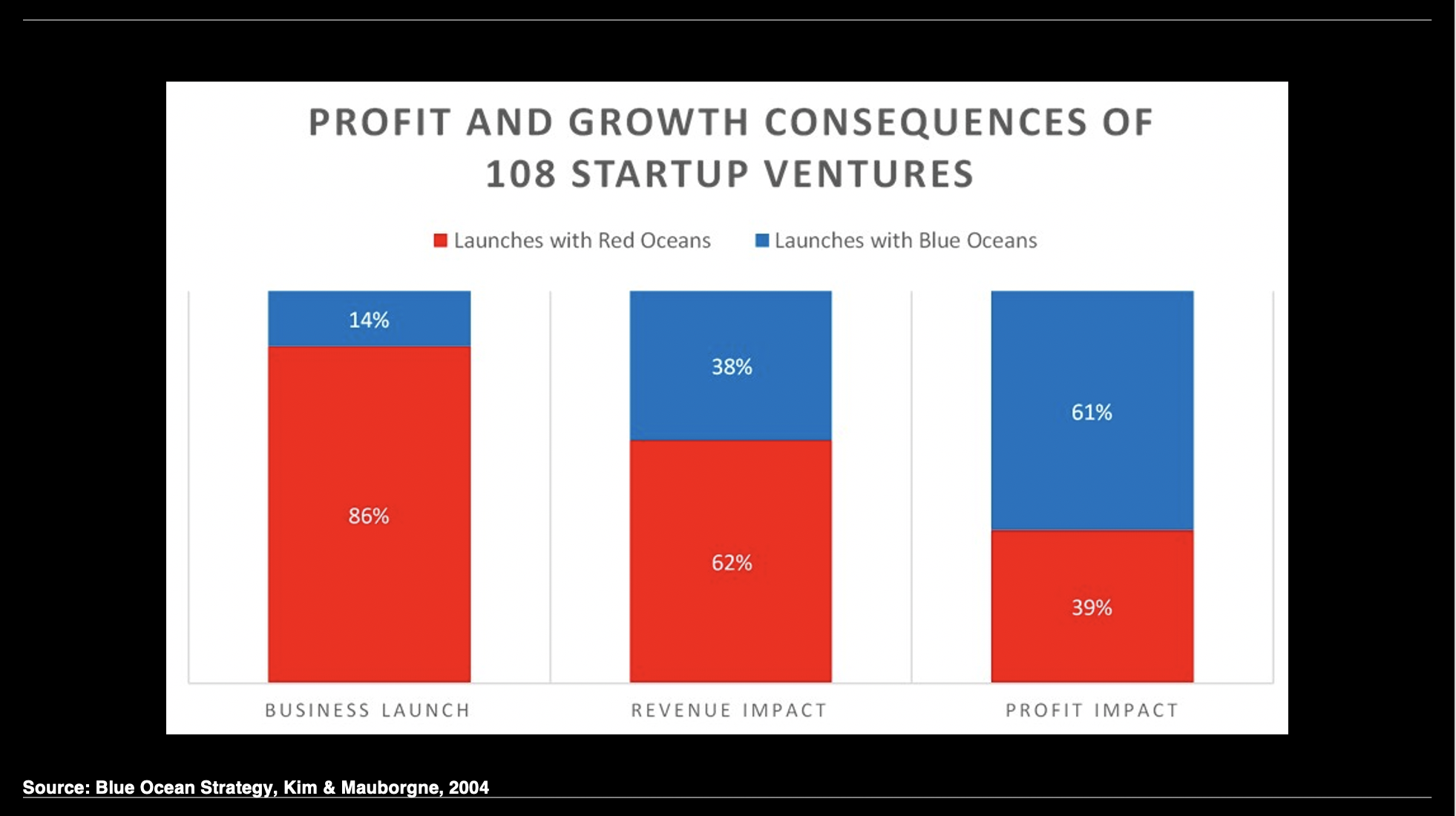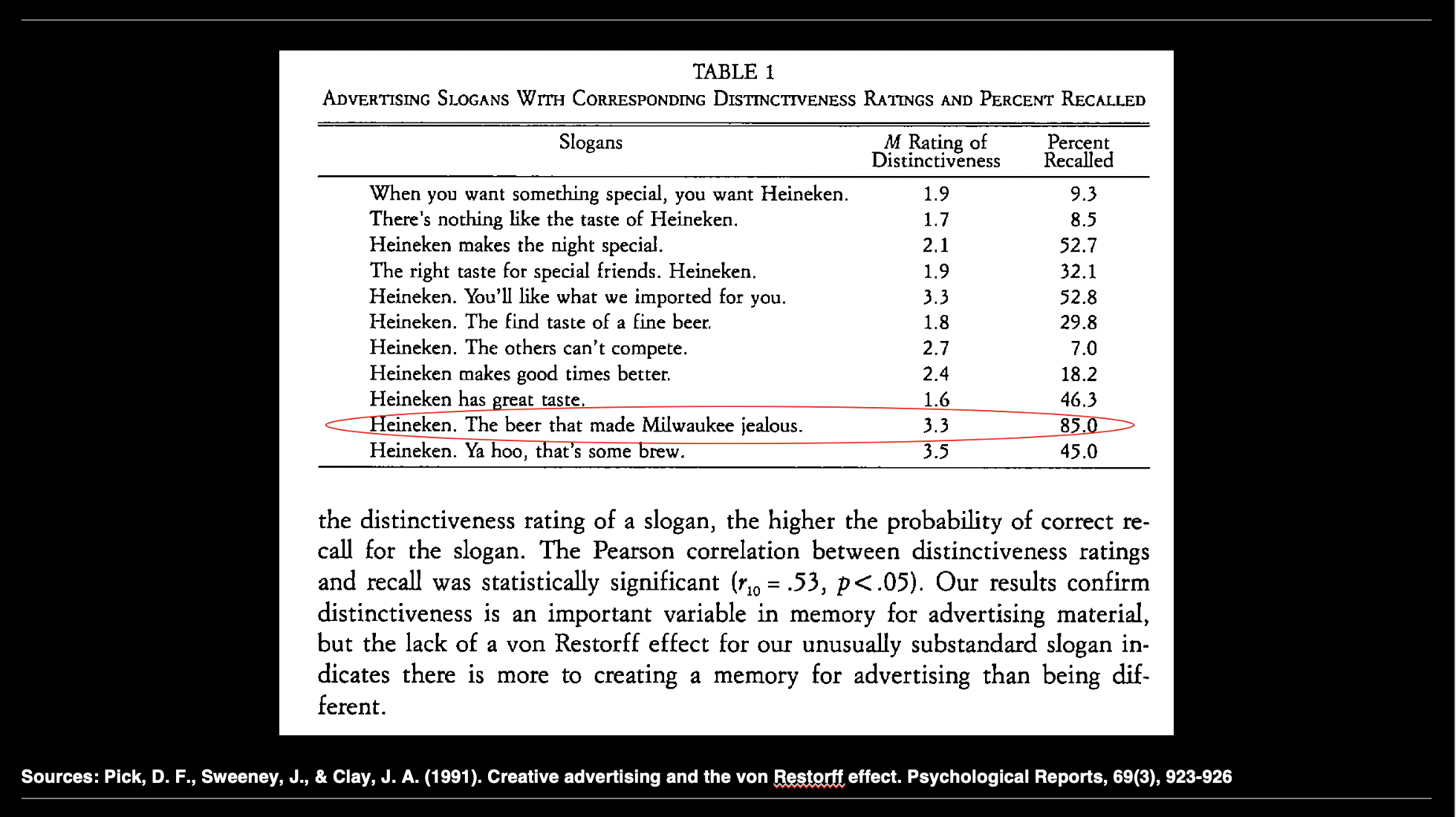
THE STUPIDITY OF SAMENESS AND THE VALUE OF DIFFERENCE
Tom Roach
20/03/2019
Tom Roach, BBH London’s Head of Effectiveness, discusses the importance of difference in business, marketing and creativity and shares some key data to help you avoid drowning in the ‘sea of sameness’.
Sameness is commercial suicide – whether your chosen way of being different is differentiation or distinctiveness[1] or like me you’re a cakeist and would ideally want both. Yet there’s a growing ‘sea of sameness’ out there, and the sea levels seem to be rising.
The idea of competitive advantage is intrinsically linked to difference. Which is why the marketing sections of business books always say the same thing – difference matters – and no marketing professors ever advocate sameness as a winning strategy.
This goes back to 1933 when Edward Chamberlin’s seminal book ‘The Theory of Monopolistic Competition’ first introduced the idea of product differentiation, suggesting that real or simply perceived differences, however slight, help pair buyers with sellers according to their preferences. It came to be accepted orthodoxy that emphasising differences between your brand and others could increase people’s appreciation of your offer, make it hard for people to make direct comparisons, make them less sensitive to features of competing offers, and more willing to pay a premium for your brand.
But differentiation has taken a beating in the last decade from Byron Sharp and the Ehrenberg-Bass Institute, who, whilst acknowledging that it exists and matters to a degree, believe its role in consumer choices is less pronounced in practice than the textbooks would have us believe and that brands tend to be much more substitutable than previously thought. They advocate an alternative strategy, ‘distinctiveness’, which is about increasing the visibility of the brand in its competitive environment and making it look more recognisably itself.
Here’s my view, for what it’s worth. The central importance of brand differentiation has probably been over-stated historically, and the importance of distinctiveness had been under-stated until recently. But seeing the two as unrelated, alternative strategies rather than potentially complementary ones means we may be missing out on deploying the full power of difference at a crucial time: a time when both differentiation and distinctiveness have never been less evident in actual marketing practice.
Because on marketing’s frontline, the differentiation vs distinctiveness debate can seem like an irrelevance when brands being different in any way is getting harder and harder to spot in the wild. In fact, if you want to be really critical, sameness, not difference, seems to be becoming the common denominator for many brands today, and whilst this seems true in many categories, it’s especially so in the world of digital service brands.
Although it’s fair to say, this is nothing new – BBH Labs spotted this in 2017 with its discovery of at least 27 brands using the construct ‘Find your X’ in their communications:
The sameness we’re all witnessing is the combined effect of brands being too similar in their offers, poorly differentiated in their branding, and undistinctive in their communication.
Is the value that business, as a whole, places on being different declining? If so there are probably multiple causes rather than a single smoking gun. In this world of agile product development, genuine differences in products can now be eroded faster than ever. Differences tend to be smaller, less tangible and more fleeting. What makes a company different in its totality could be a combination of thousands of tiny differences, rather than larger, more singular, more permanent points of difference. Perhaps these many small differences are harder for marketers to get a fix on, distil and build their brands around. Perhaps in a world where ‘pivoting’ is all the rage, the notion of pinning down what’s enduringly different about a brand and distilling that into consistently distinctive brand assets and communication is falling out of fashion. Perhaps it’s a symptom of the fact that so many marketers now learn on the job in specialist siloes rather than getting formal marketing training where they’d have the big over-arching theories like differentiation and now distinctiveness drummed into them.
Whatever the reasons for the decline in the pursuit of difference, rather than arguing about the relative importance of differentiation vs distinctiveness, let’s aim our fire at an enemy that should unite us all: sameness.
So if you think your brand could be in danger of heading into a sea of sameness, here’s some data that could help:
1. BEING UNIQUELY DIFFERENT IS MORE PROFITABLE
Operating in uncontested market space is far more profitable than competing for a share of an existing market. A study of 108 business launches from 2004[2] showed that the 14% competing in uncontested market space (‘Blue Oceans’), achieved 38% of the total revenue impact and 61% of the total profit impact. Whilst the majority of 86% business launches were competing in existing markets (‘Red Oceans’), only achieved 39% of the total profit impact.
2. BEING SEEN AS DIFFERENT CAN DRIVE BRAND VALUE
Over a three-year period from 2015-2017 brands that were perceived to be both highly disruptive and different increased in brand value by 28%, whereas brands that were perceived as both low in disruption and differentiation declined by -5%[3].
3. BEING SEEN AS DIFFERENT CAN PREDICT SALES GROWTH
Brands which people score strongly for both meaning and difference grow sales around 8.2% better in the following year than brands which score poorly, with difference being responsible for at least 50% of the predictive power[4].
4. PEOPLE WILL PAY A PREMIUM FOR BRANDS THEY THINK ARE DIFFERENT
An analysis of actual prices paid (from the loyalty card data of 2400 shoppers for 79 brands) showed that shoppers paid 22% more for brands they find different and meaningful vs those they didn’t, with difference alone accounting for 40% of this on average[5].
5. ADS THAT MAKE BRANDS SEEM DIFFERENT ARE MORE LIKELY TO DRIVE SALES
The top 1/3 ads for ‘make the brand seem really different’ in Kantar’s Link database achieve +90% vs the bottom 1/3 on Kantar’s measure of an ad’s likelihood to drive short-term sales[6].
6. DISTINCTIVENESS IS HIGHLY MEMORABLE
In 1933 psychologist Hedwig von Restorff showed that distinctiveness drives memorability[7], giving her name to the ‘Von Restorff Effect’ (aka the ‘The Distinctiveness Effect’ and the ‘The Isolation Effect‘), which predicts that when multiple similar things are presented, the one that differs from the rest is more likely to be remembered.
Similarly, ‘The Bizarreness Effect’ predicts that incongruent or surprising things are more memorable than expected and common ones as they’re more distinctive. Researchers from the University of California[8] measured the brain activity of respondents, who whilst wearing EEG caps, read a series of sentences of which some contained semantically incongruous words like “Turtles are not as smart as mammals like socks or dogs.” The data showed a large spike in brain activity when participants read the incongruous word in the sentence, suggesting these words resulted in a significant degree of involuntary attention and processing.
7. DISTINCTIVE, HIGHLY CREATIVE ADVERTISING SLOGANS ARE MORE MEMORABLE
Research into the von Restorff effect in creative advertising found that highly distinctive ad slogans are much more likely to be recalled, but only if they’re judged to be high quality and not if they’re substandard. The slogan ‘The beer that made Milwaukee jealous’ was remembered by 85% in the study but the marginally more distinctive but substandard slogan, ‘Ya hoo, that’s some brew’, was only remembered by 45%.[9]
8. DISTINCTIVE BRAND ASSETS DRIVE AD RECOGNITION
Advertising featuring known distinctive brand assets achieved an average +34% higher advertising recognition in a study by Jenni Romaniuk at the Ehrenberg-Bass Institute[10].
9. DISTINCTIVE BRAND CAMPAIGNS ARE MORE PROFITABLE
‘Distinctive brand campaigns’ featuring recognisable brand ideas & assets achieved a +62% stronger short-term profit ROI vs campaigns which didn’t in an analysis of 1300 campaigns by Ebiquity[11].
10. DISTINCTIVE ADS CORRELATE WITH SALES GROWTH
Audi’s measure of the distinctiveness of their advertising correlates with increased media-driven sales (relative to total volume sales) between 2015-2017[12]. Audi has also found that when an ad has strong cut-through, it is three times more efficient at driving orders.
More research may be needed on the relative importance of differentiation and distinctiveness before the academic debate can move on, but hopefully this data will help more marketers on the frontline fight the onslaught of sameness wherever they see it.
And perhaps one day differentiation and distinctiveness may be seen as two useful and complimentary tools in the marketing armoury rather than entirely opposing schools of thought.
Clearly there’s no point magicking up distinctive brand assets or distinctive advertising from nowhere. So identify your strengths and differences and build your brand around them. Use them to inform the development of distinctive brand assets and truly distinctive communication. Deploy them consistently. So that everything you do and say makes you look more like you and less like others.
Being different from others and looking recognisably like you works.
Difference is playing it safe, sameness isn’t. Sameness is playing it stupid.
Or as they say at BBH, when the world zigs, zag.











